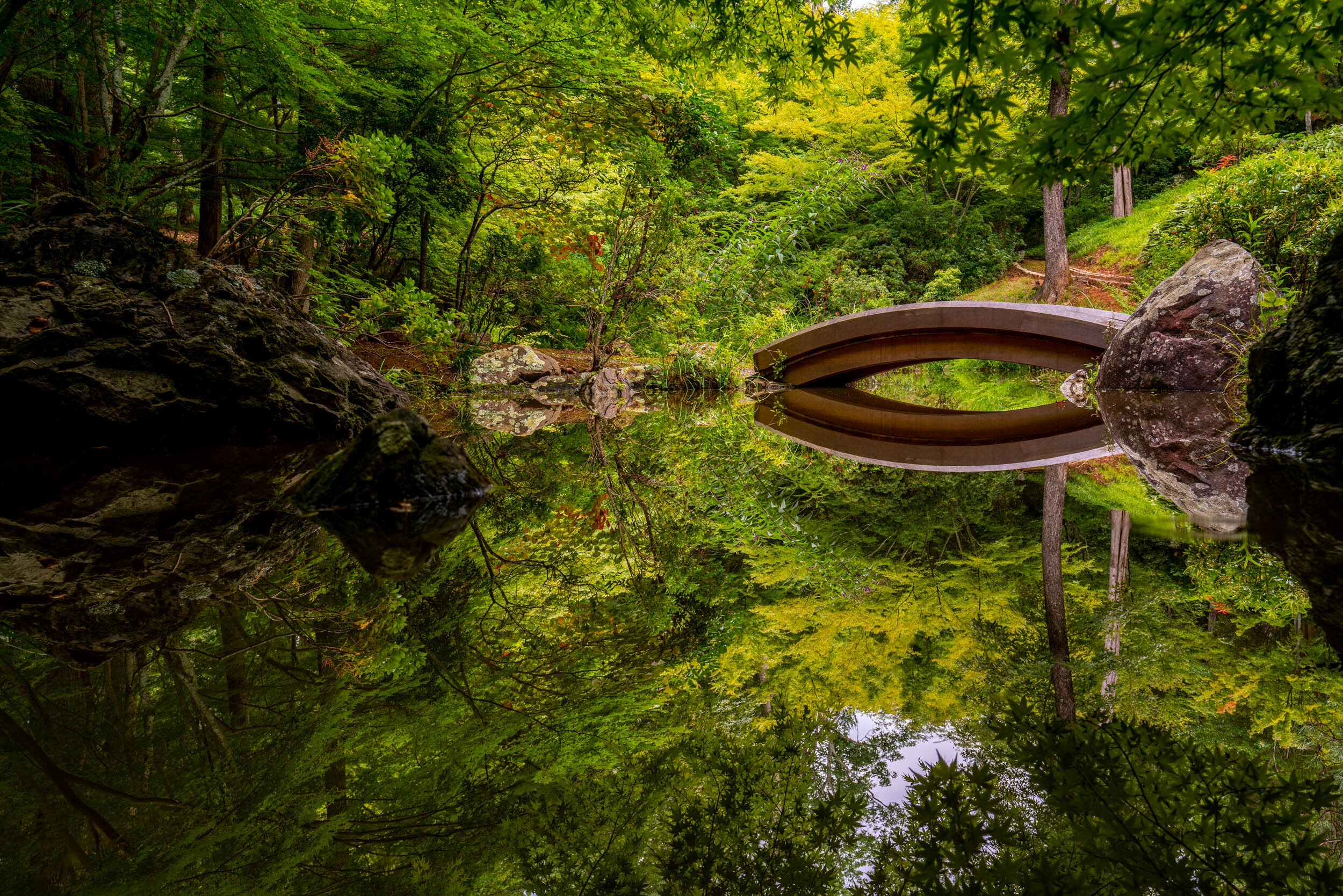
The Japanese Garden
In the mid-1990s, the Kluges supervised the construction of a four-acre Japanese garden and house, built using ancient techniques and incorporating some 50 plants indigenous to Japan and America.
The Garden prioritizes the relationship of the site and its surrounding natural environment. The Japanese and American landscape architects worked together to combine a plant palate using Japanese plants and native, American plants. The climate here at Morven is relatively similar to that of Kyoto, which allowed a co-mingling of some 50 plants indigenous to Japan and America.
The Rocks in the Japanese Garden reflect the importance of terrain and stone within Japanese culture. Ancient Japanese garden texts give considerable attention to the naming of rocks. As early as the 11th century, a manual, “Sakuteiki”, was written about the art of choosing, laying, and arranging rocks.
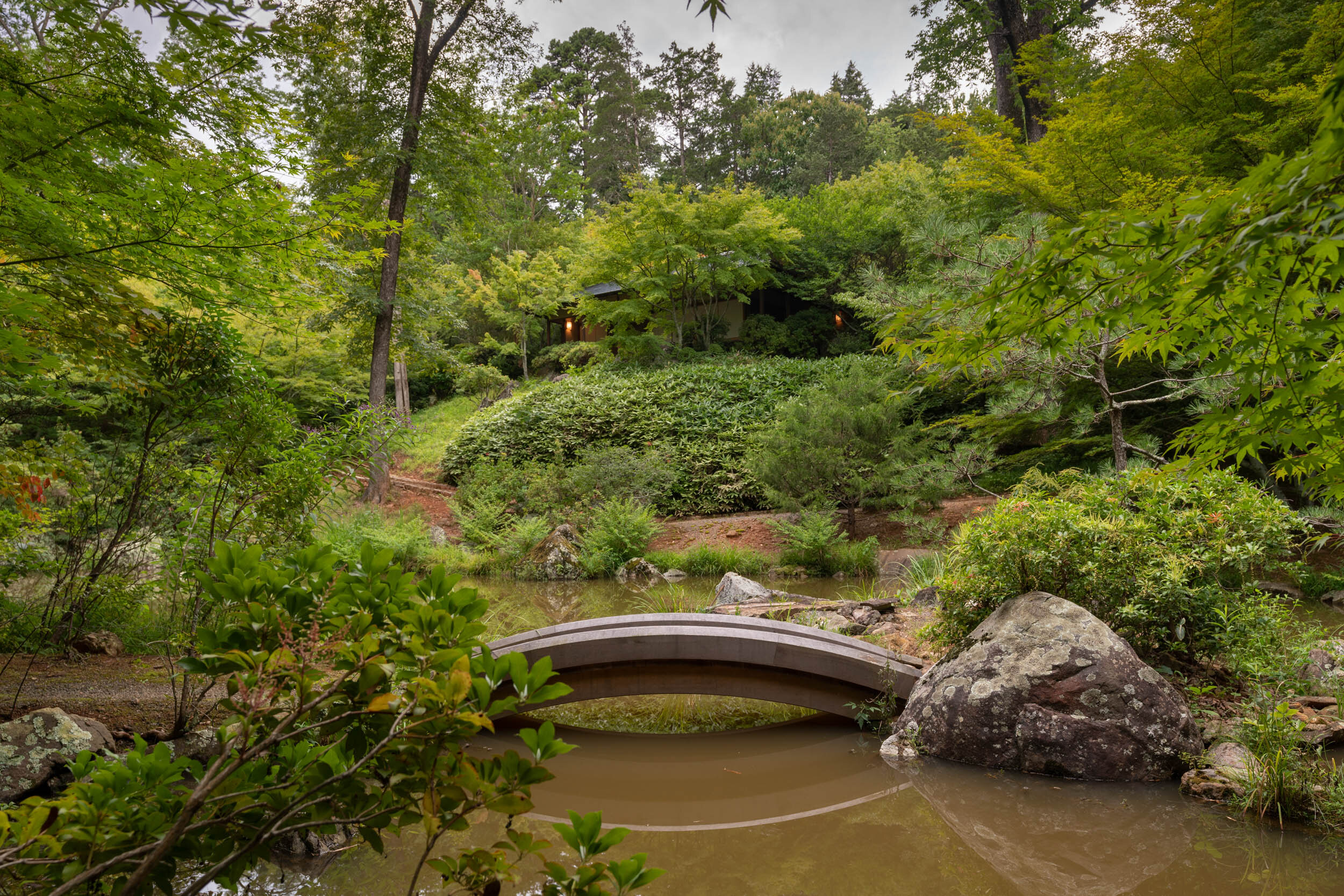



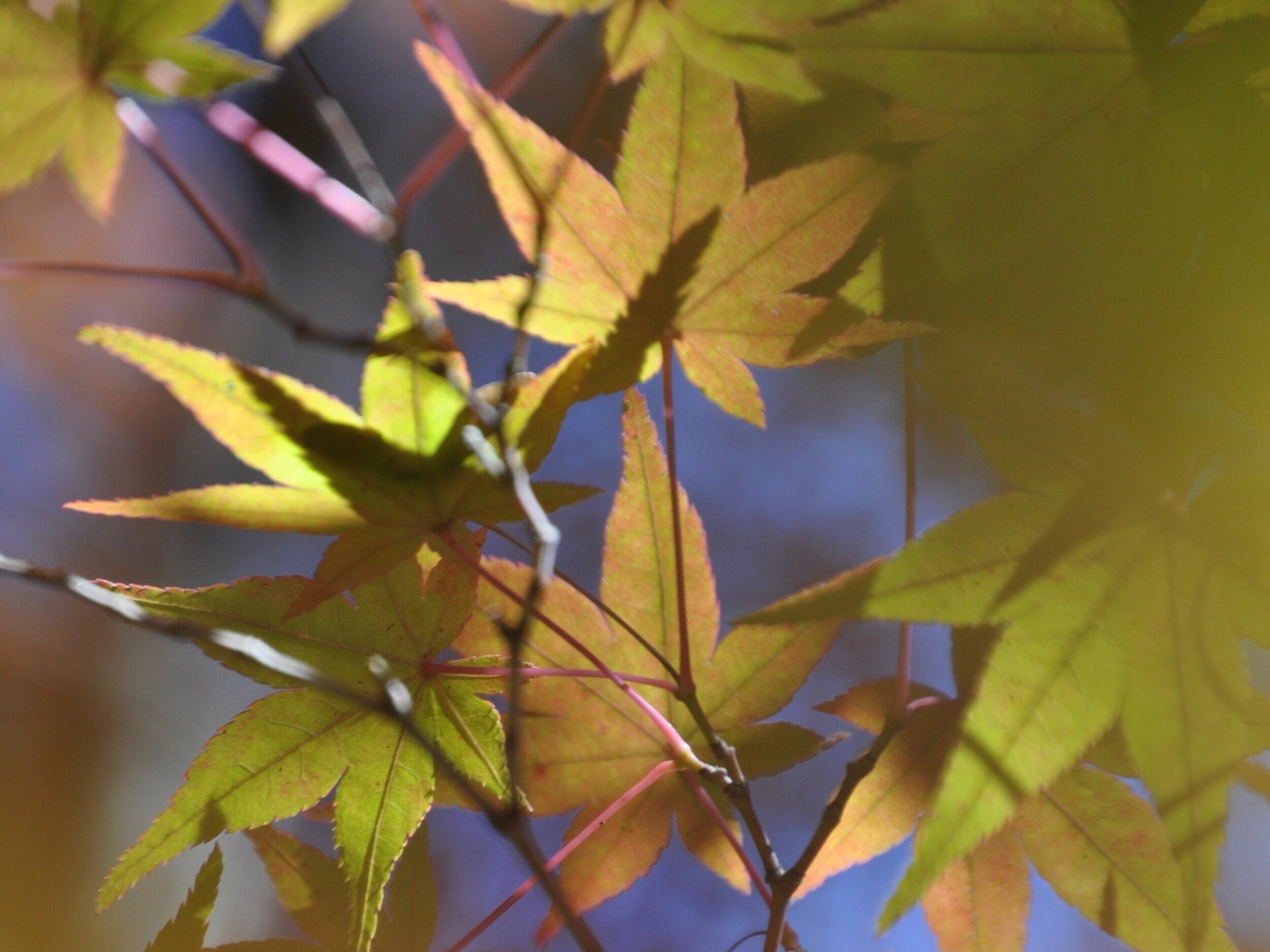
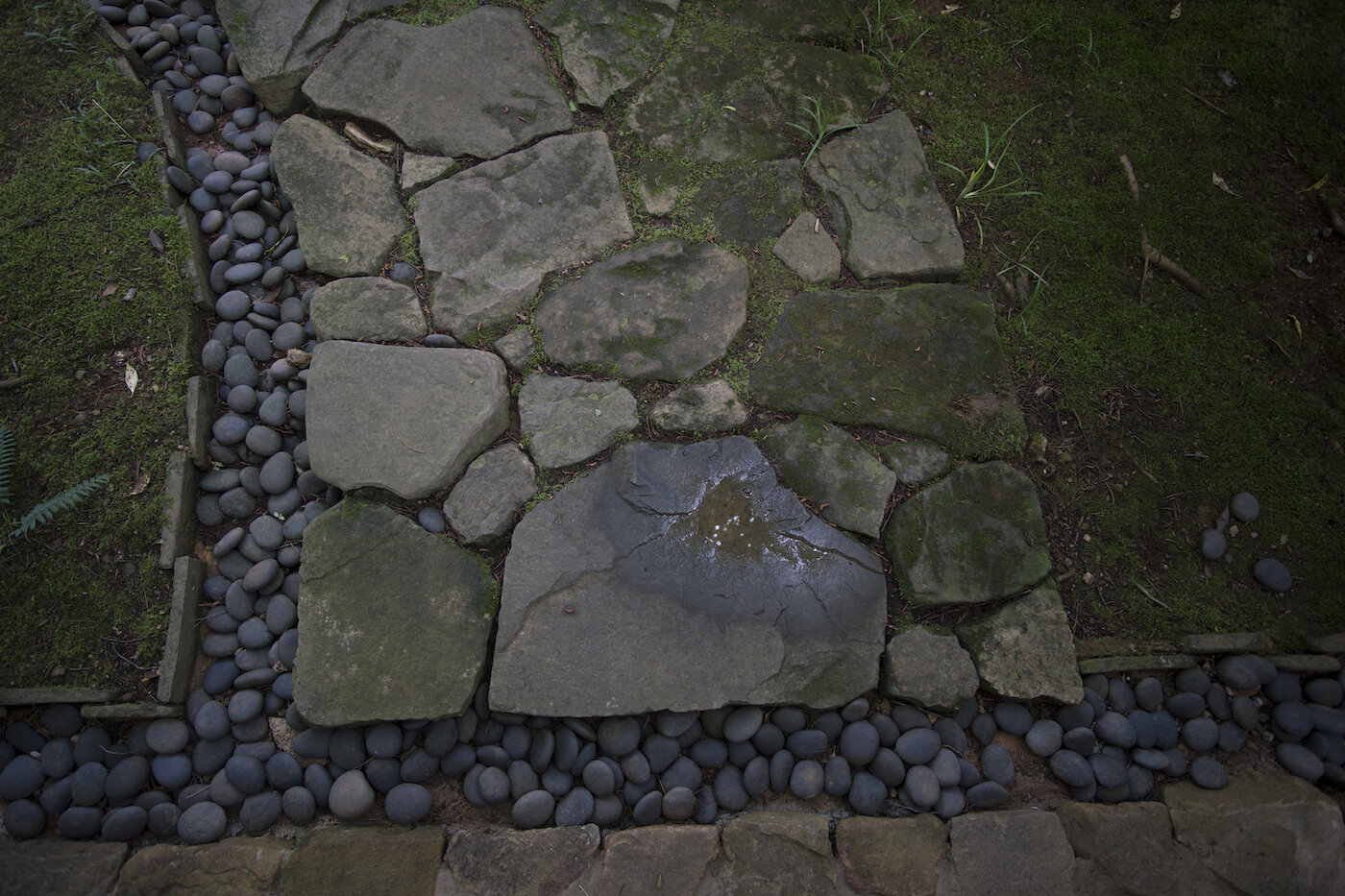
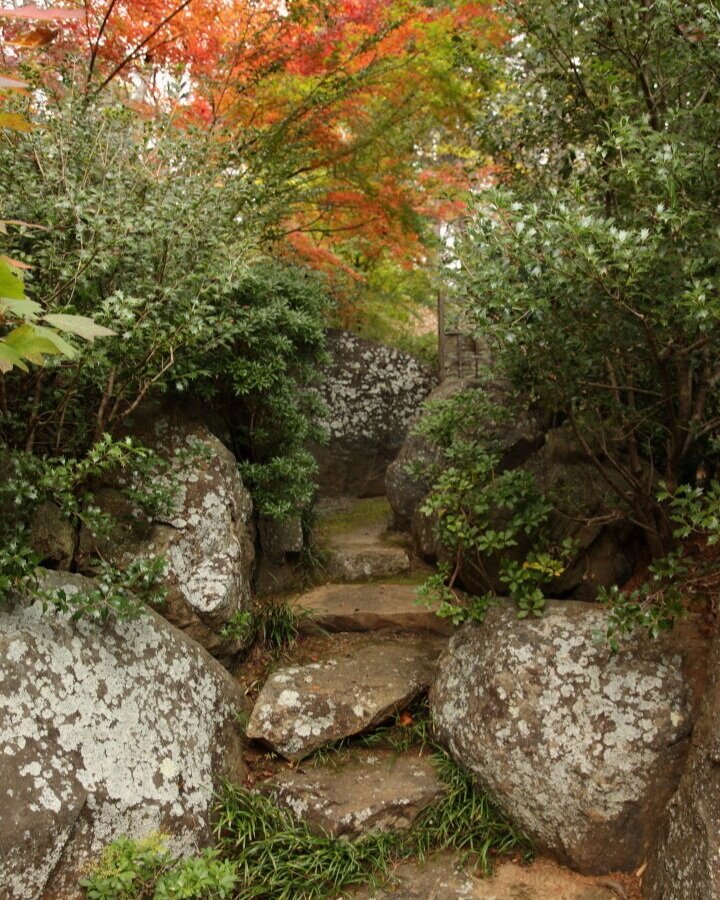


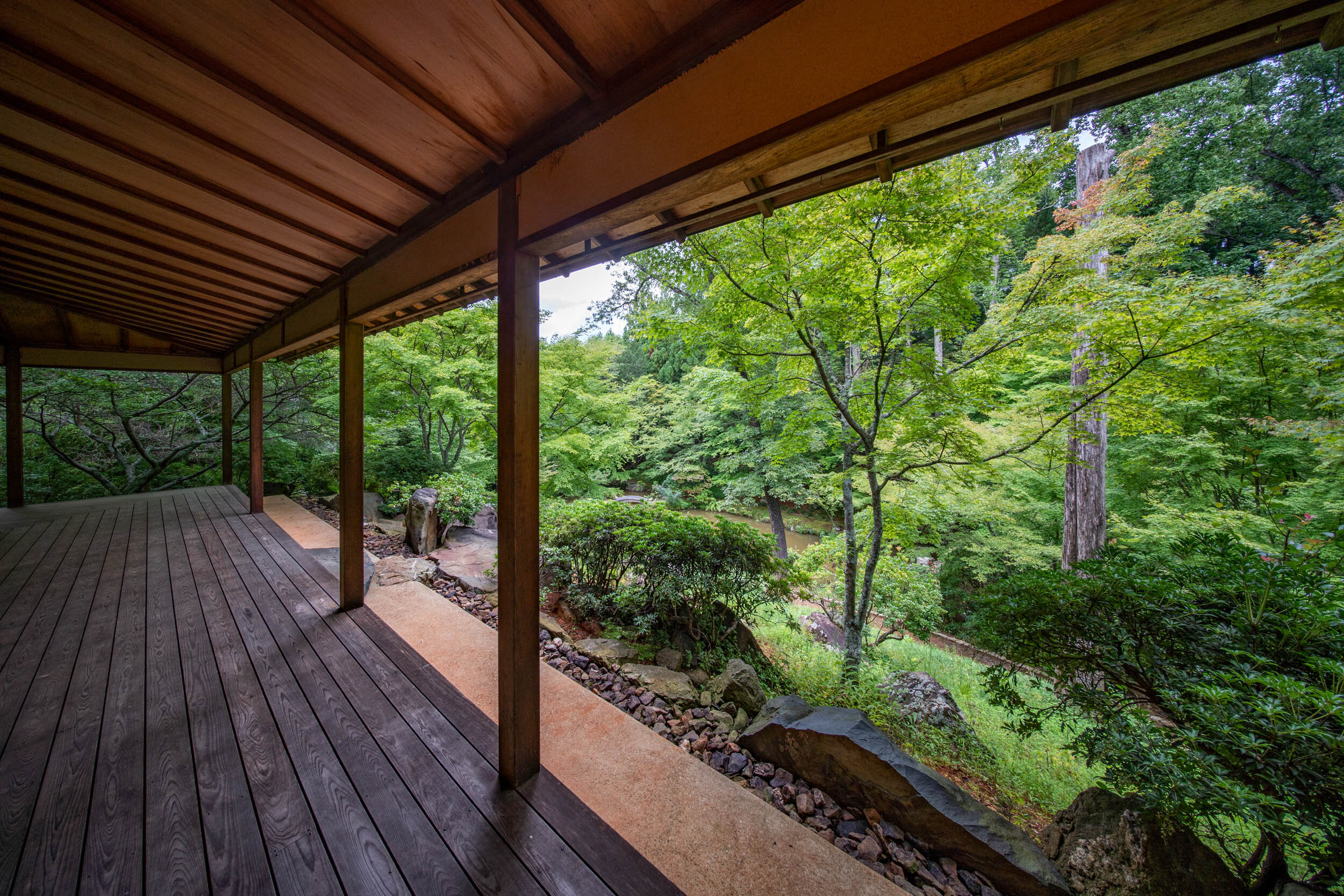

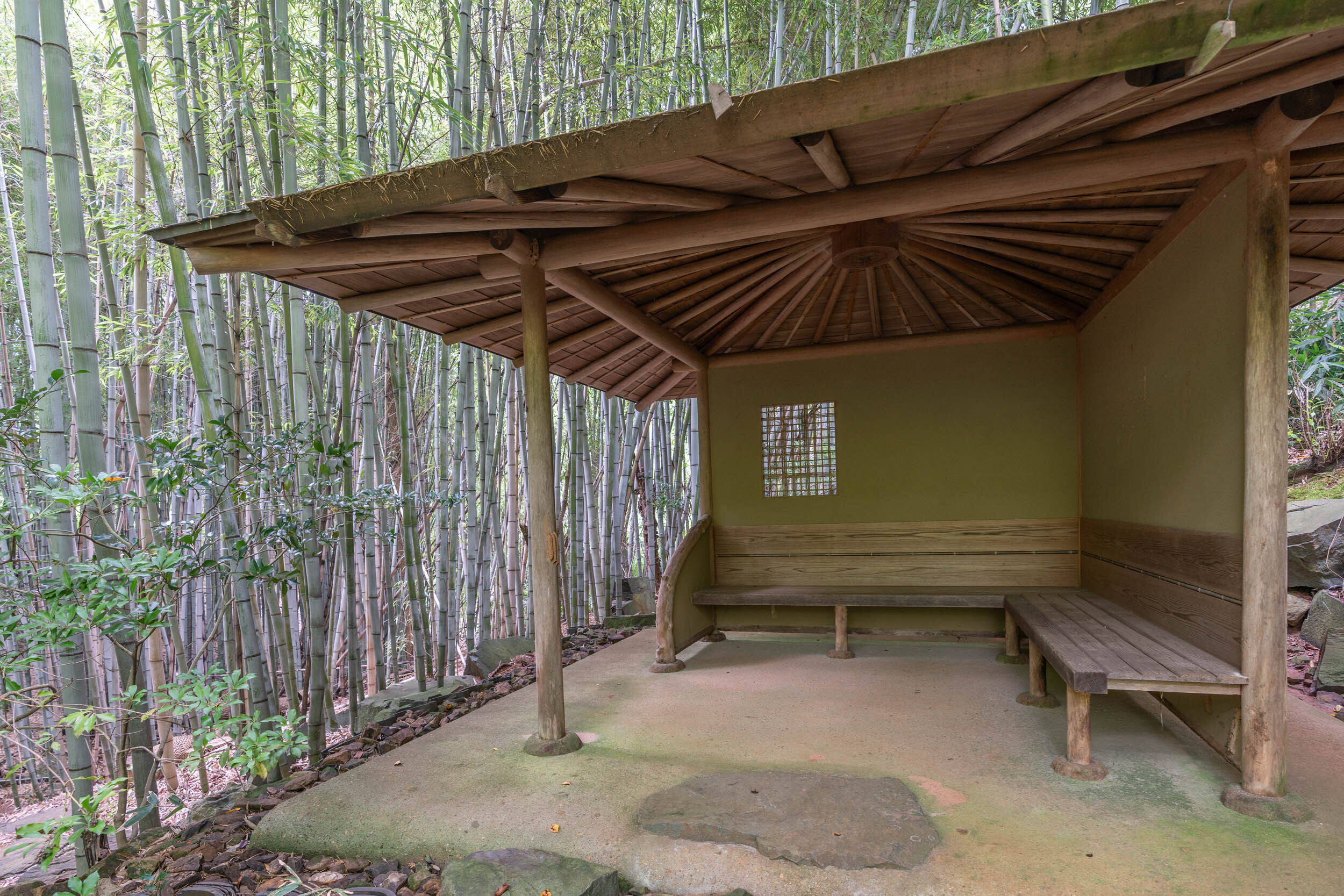
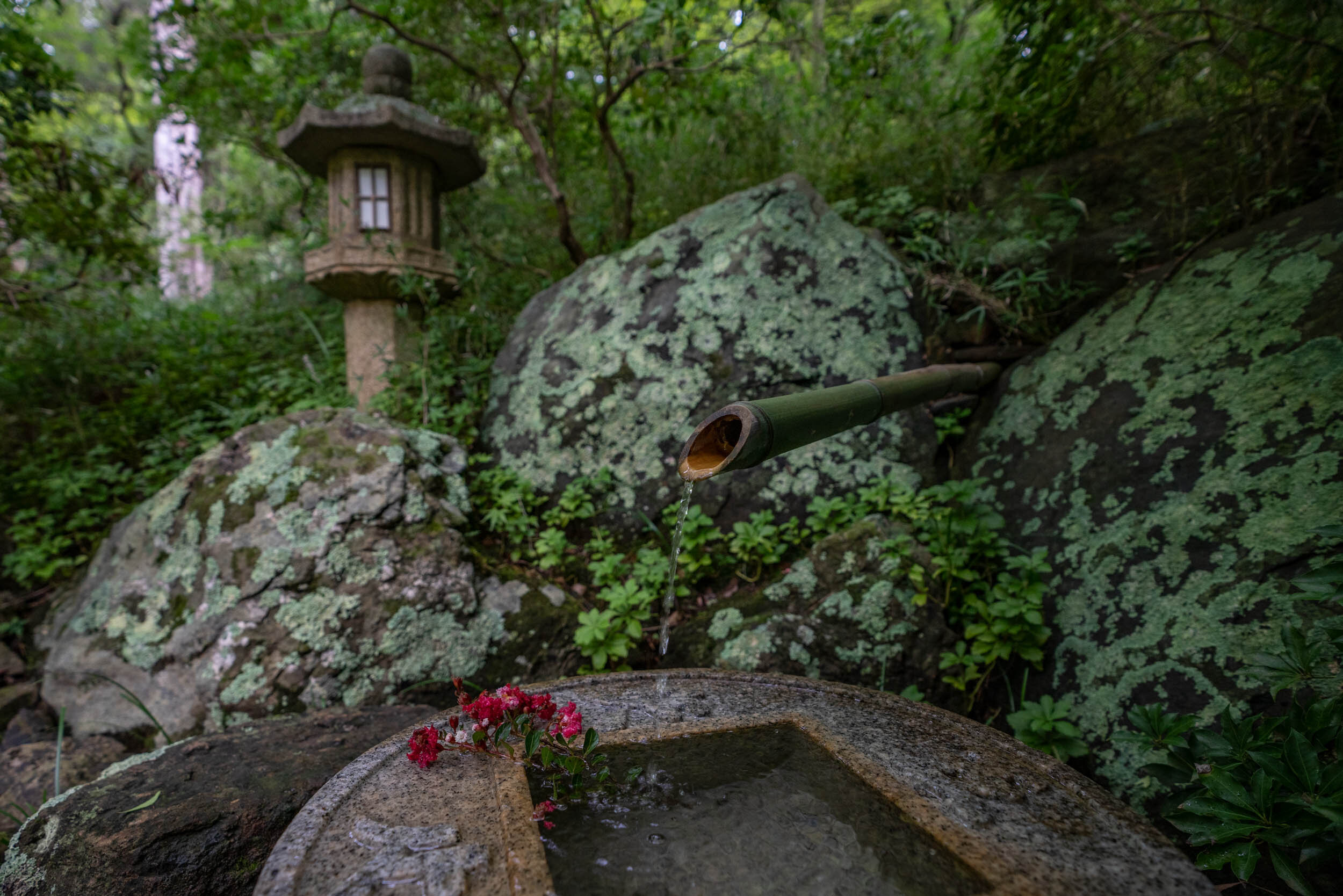

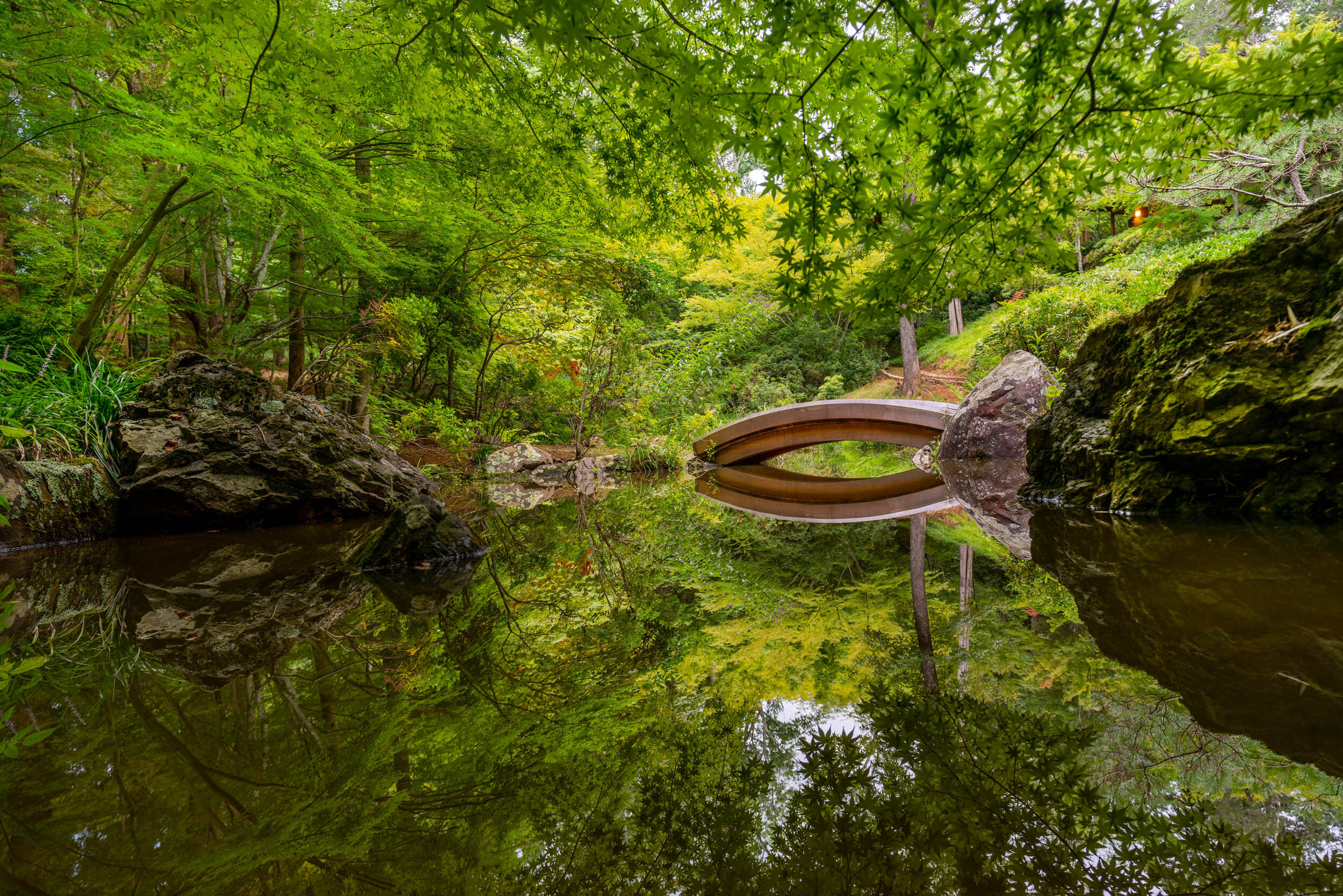
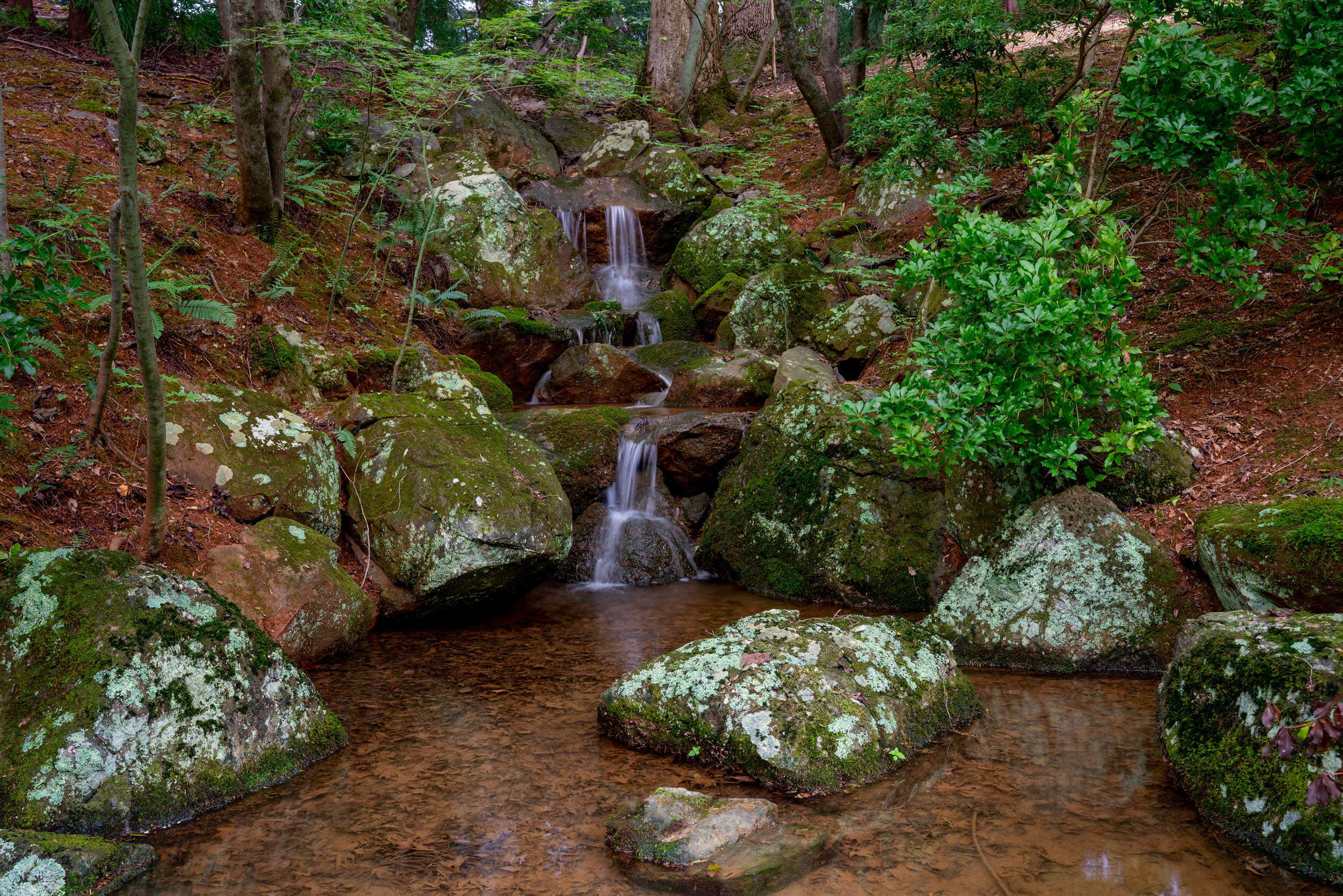
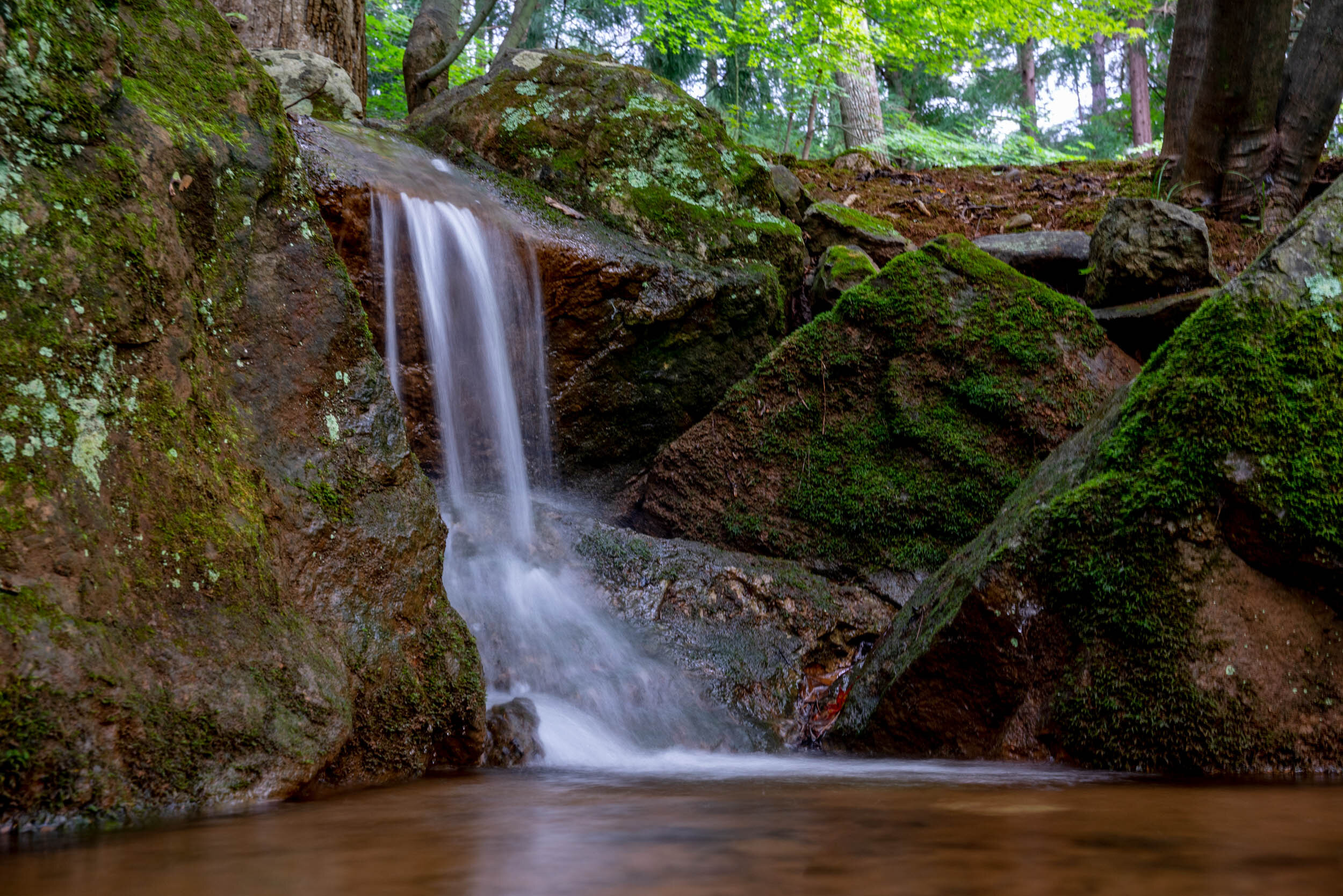
The House was designed by Mr. Watanabe, a Tokyo architect, and completed in 1995 by a Sukiya construction company from Japan. This house is one of the best examples of Sukiya-style architecture in the United States. The term “Sukiya” refers to tea ceremony architecture, and comes from the words suki (“refined taste”) and ya (“house”). For 400 years the Sukiya style has evolved from small tea hut construction to a sophisticated form of residential architecture. Characteristics of Sukiya style include: quality craftsmanship, extensive use of natural material, integration of interior and exterior spaces, graceful proportions, and the elimination of excessive ornamentation.
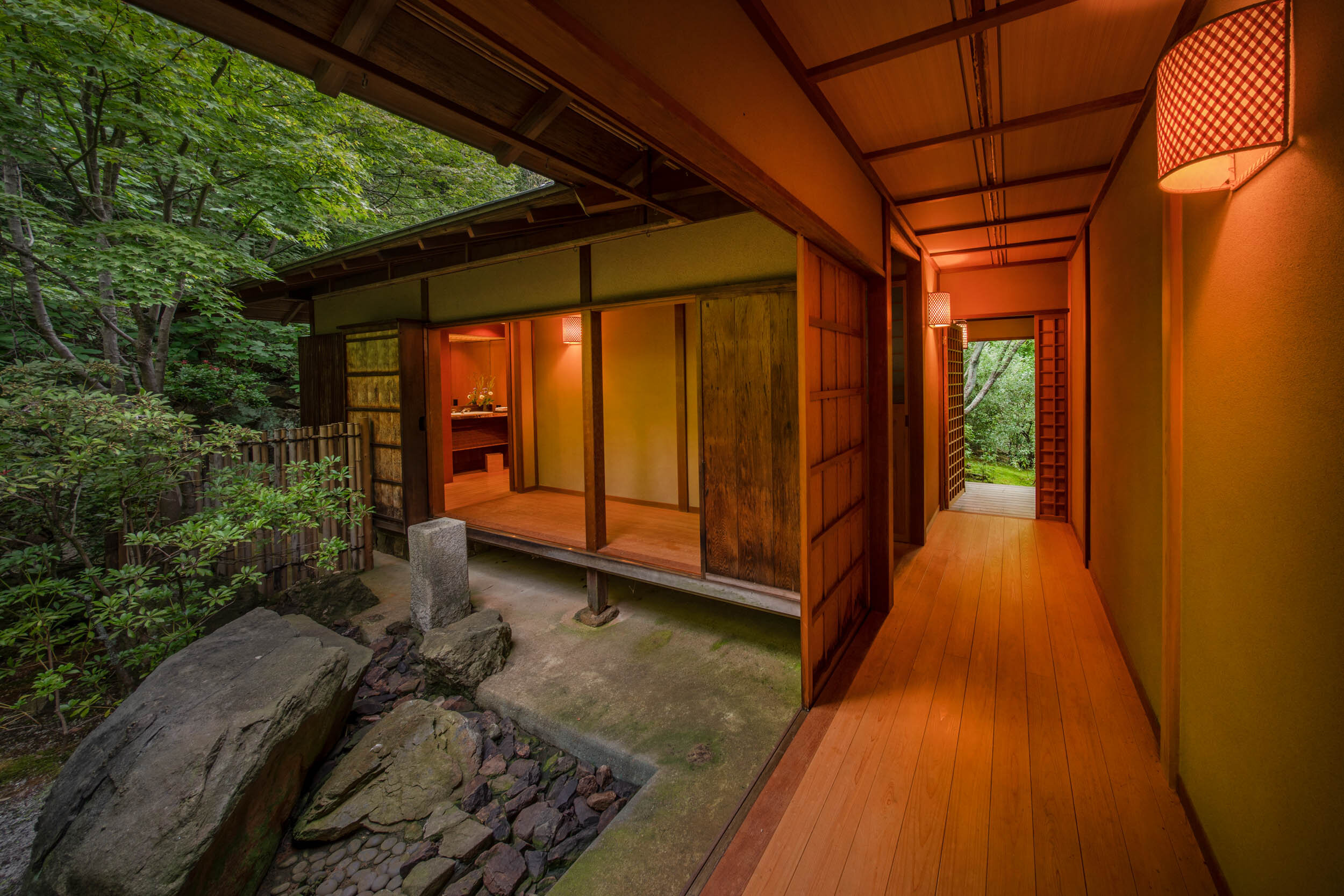
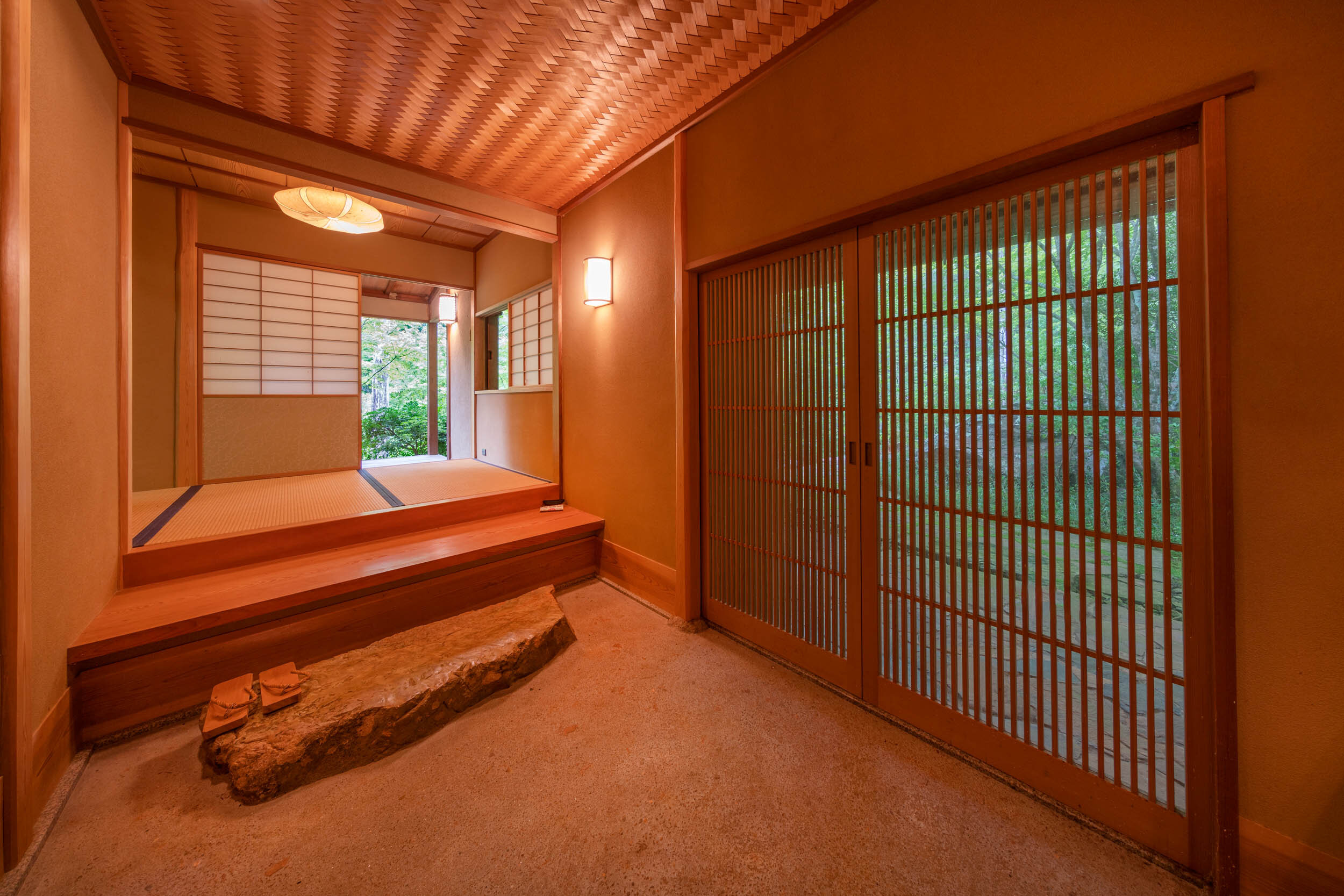

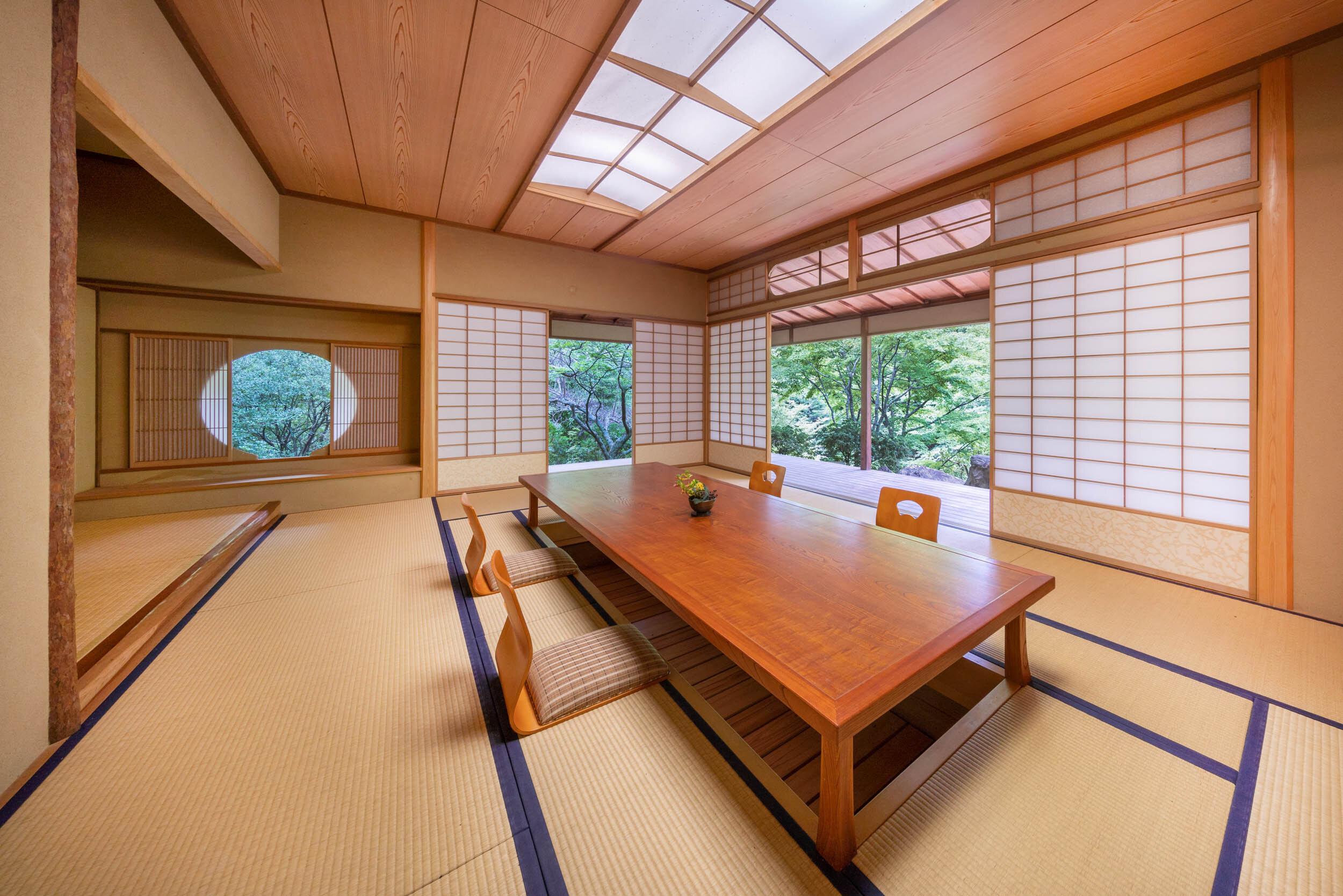
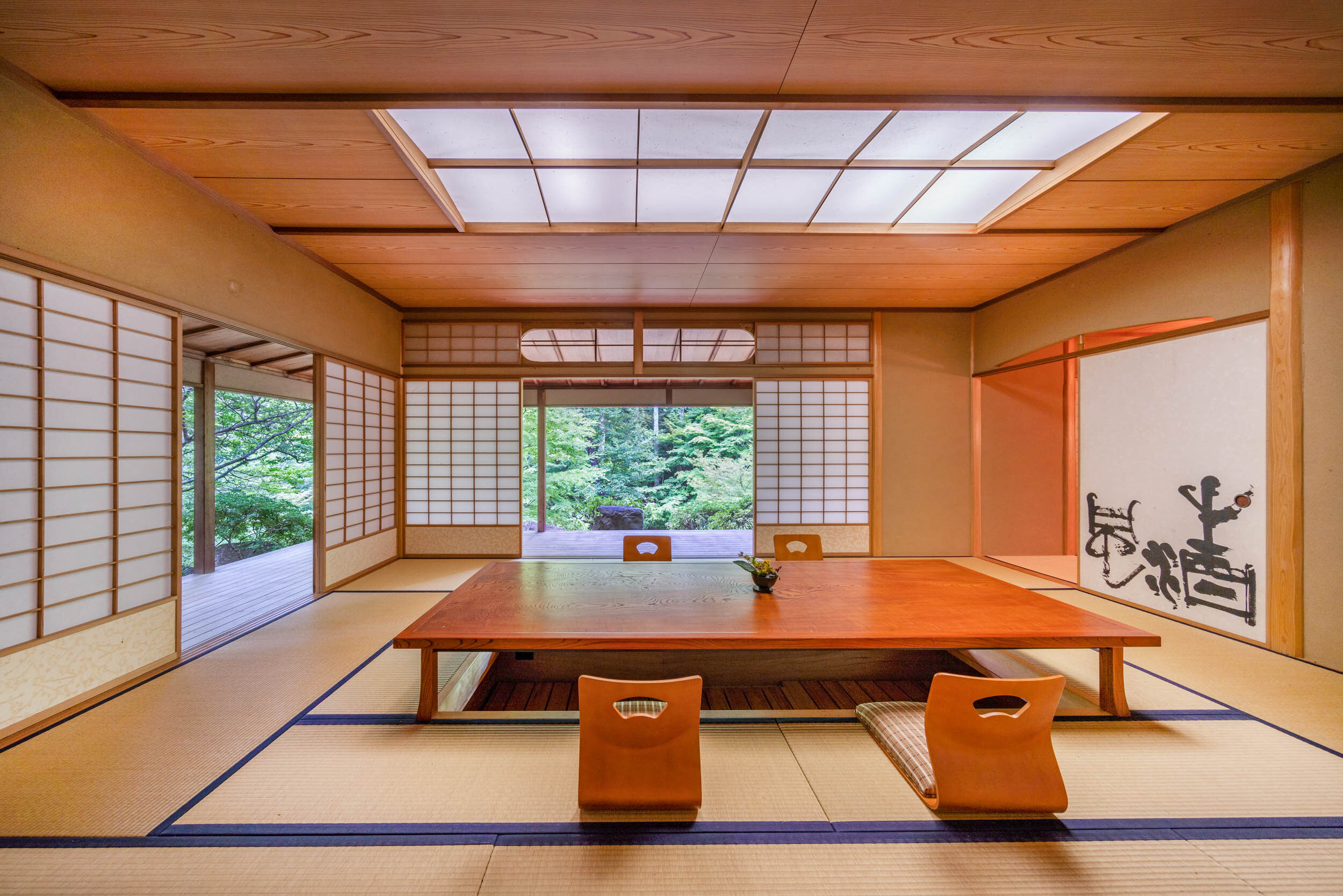
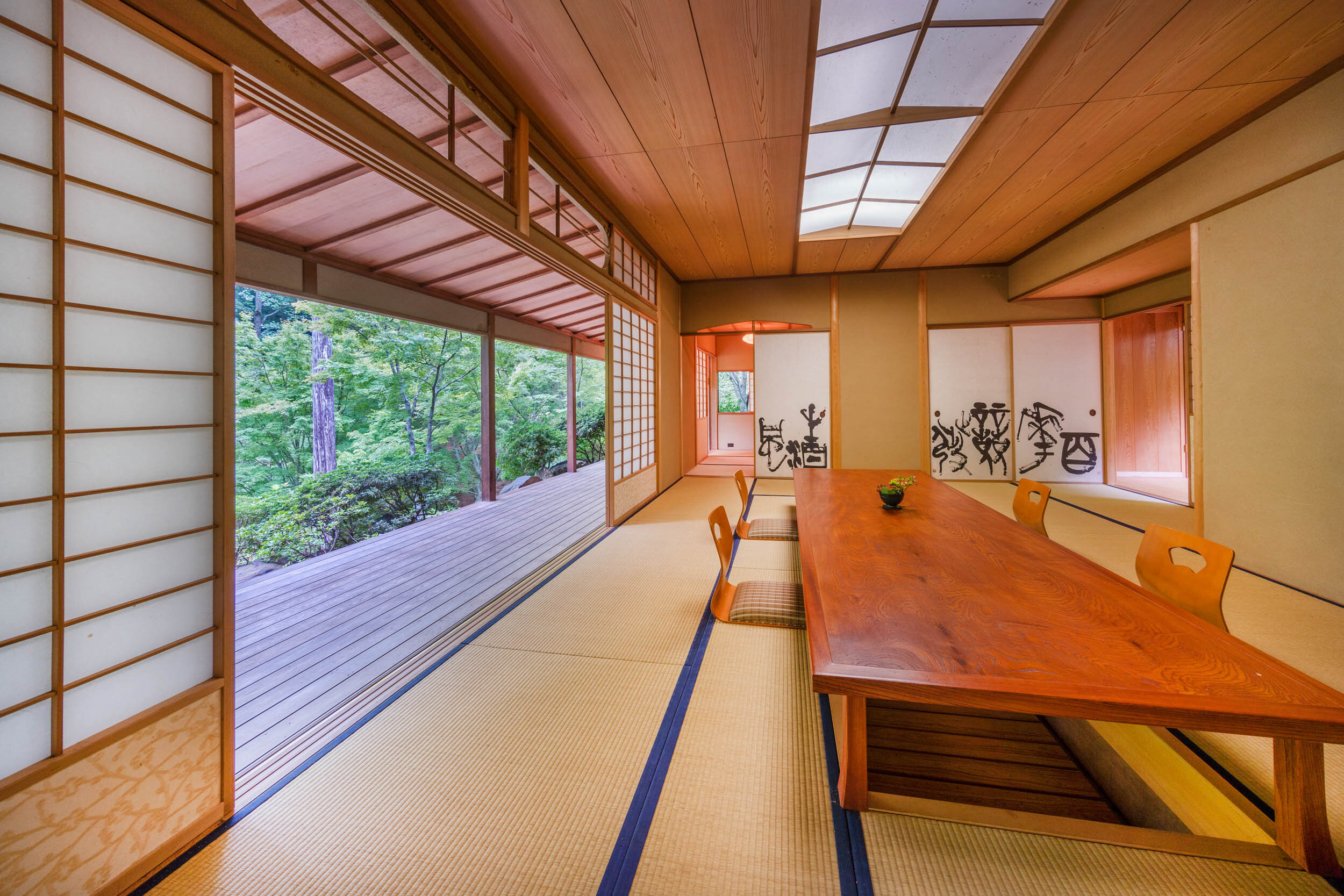
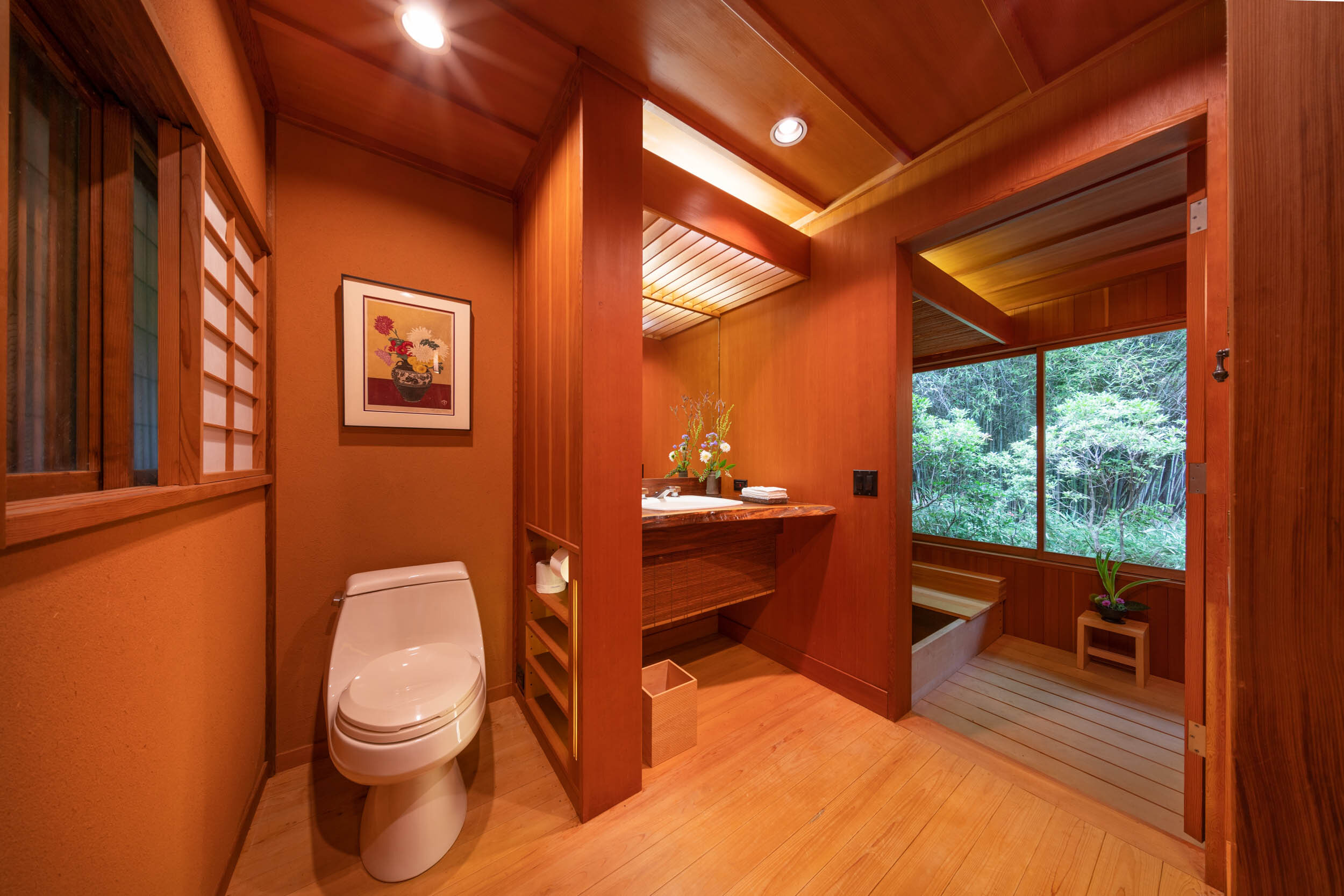
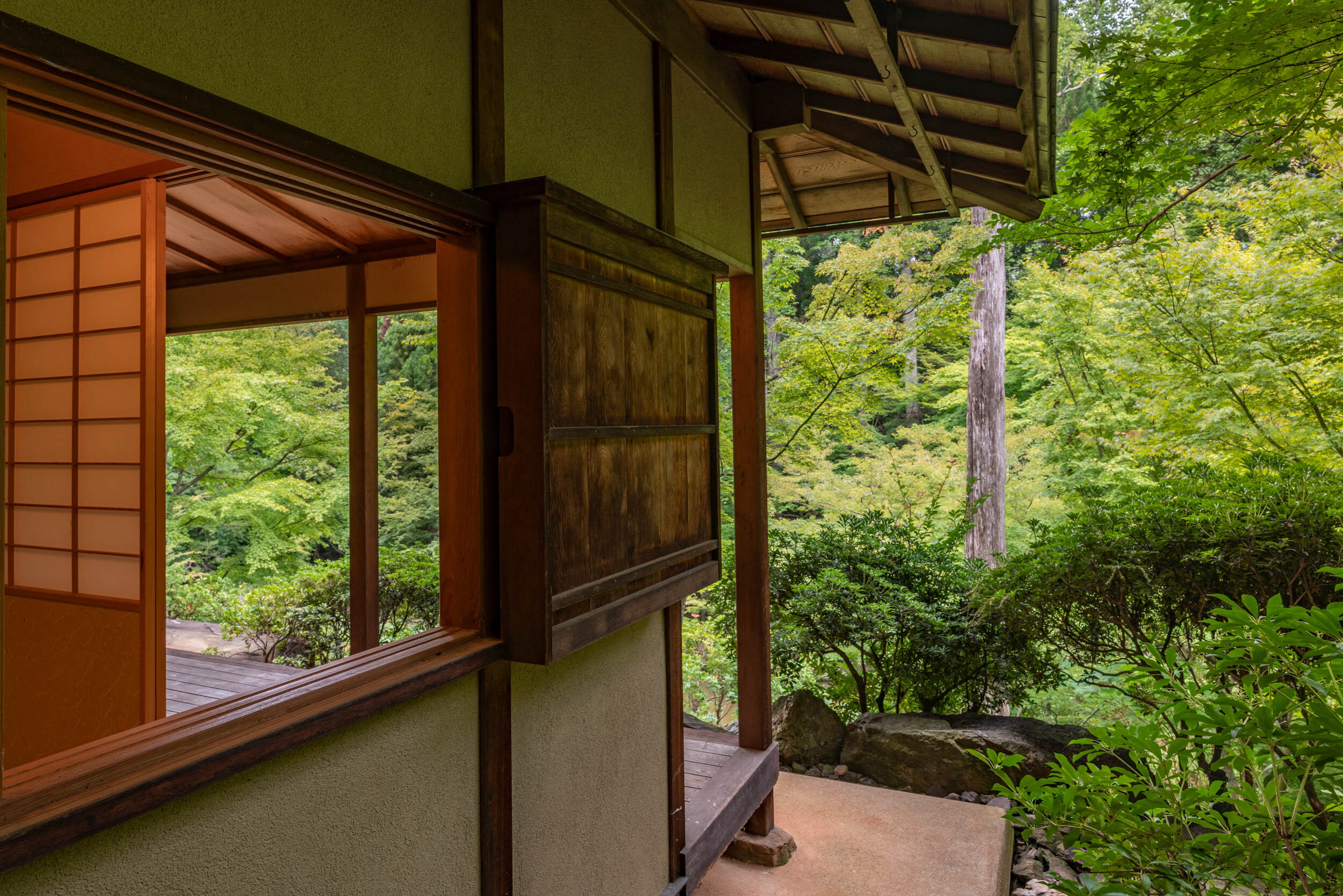

The Front Gate has a “Kenninji-gaki” style bamboo fence, which screens the garden from view as one approaches on the pathway. The gate is made from northern white cedar shakes and hand cut shingles that sit over an internal framework of pressure-treated fir. The Hinoki Cypress (Chamaecyparis obtusa) doors naturally resist water. The doors feature a wonderful carved emblem of Virginia’s native flowering dogwood.
Japanese Garden Brochure:
Our Japenese Garden brochure includes a list of plant species, details about the construction of the Sukiya-style house, a description of the layout and intent of the garden, and history of the garden’s construction. Click the image to see more.
Contact us if you would like to host an event for your UVA group or local non-profit.
Please note that due to the details of Morven’s gift agreement and our staffing footprint, we are unable to accommodate public access to the property. There are annual events that open the gardens, most notably the Historic Garden Week hosted by the Garden Club of Virginia.


